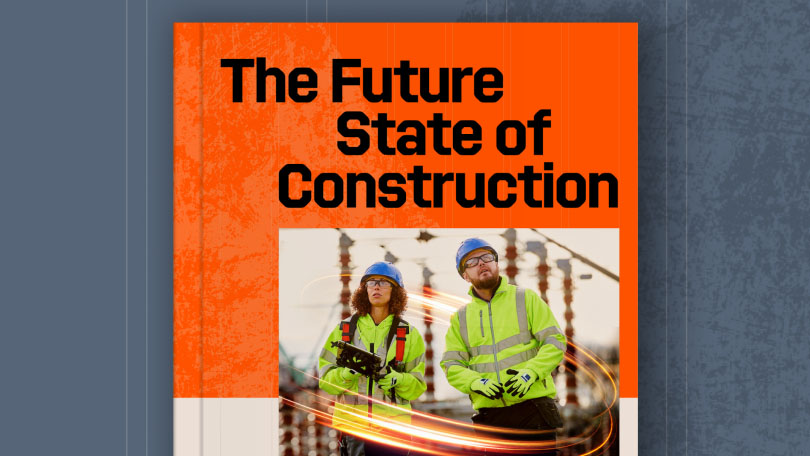— 7 min read
Construction Site Signage: What to Use and Where to Place It
Last Updated Aug 28, 2025
Nicholas Dunbar
Content Manager
62 articles
Nick Dunbar oversees the creation and management of UK and Ireland educational content at Procore. Previously, he worked as a sustainability writer at the Building Research Establishment and served as a sustainability consultant within the built environment sector. Nick holds degrees in industrial sustainability and environmental sciences and lives in Camden, London.
Zoe Mullan
27 articles
Zoe Mullan is an experienced content writer and editor with a background in marketing and communications in the e-learning sector. Zoe holds an MA in English Literature and History from the University of Glasgow and a PGDip in Journalism from the University of Strathclyde and lives in Northern Ireland.
Last Updated Aug 28, 2025
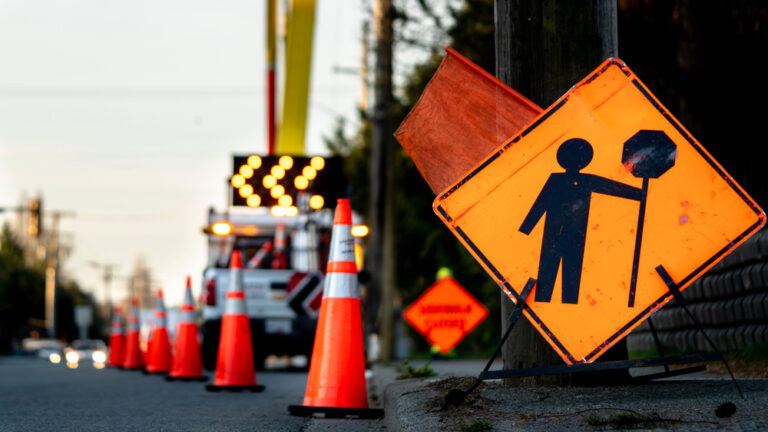
Clear, consistent signage on construction sites serves a vital purpose – it meets legal requirements and provides frontline defence against risks, ensuring everyone's safety. From alerting workers to hazards to guiding visitors safely around operations, effective signage forms a cornerstone of compliance.
Proper signage supports risk management and helps workers, subcontractors and visitors understand essential site protocols. Let's explore the types of signage required in different circumstances and how to ensure construction sites meet UK regulations.
Table of contents
Key Construction Site Signage Types
Construction site signage falls into several distinct categories. Each sign serves a specific purpose, primarily controlling risk by informing, directing and warning everyone on site. The main types include:
Prohibition signs
These indicate forbidden actions. They feature circular designs with red borders and diagonal lines through symbols.
Examples: No entry, No smoking, Do not operateMandatory signs
These signs specify required actions. They appear as blue circles with white symbols or text.
Examples: Wear hard hats, Use eye protectionWarning signs
Warning signs highlight nearby hazards. They use triangular shapes with yellow backgrounds, black borders and clear symbols.
Examples: Danger – deep excavation, Caution – overhead loadSafe condition signs
These mark safety equipment or exits. These green signs feature white symbols, typically in rectangular or square formats.
Examples: First aid kit, Emergency exitFire safety signs
These signs identify firefighting equipment and escape routes. They use red backgrounds with white symbols or text.
Examples: Fire extinguisher, Fire alarm call point
UK Signage: Legal Requirements
In the UK, construction signage requirements fall under the Health and Safety (Safety Signs and Signals) Regulations 1996 and British Standard BS EN ISO 7010. Together, these regulations establish an environment where all symbols remain clear, standardised and universally understood.
Regulations mandate safety signs wherever significant risks persist after implementing other control measures. This includes risks that design, procedures or protective equipment alone cannot eliminate. The law requires employers and site managers to ensure:
- Signs address site-specific risks appropriately
- All signage remains clearly visible and easily understood
- Signs follow standard colour codes and symbol formats
- Workers receive proper training to understand sign meanings
Failure to comply may trigger enforcement action, particularly if accidents occur due to inadequate or unclear signage.
Strategic Sign Placement
Even the clearest sign loses value when poorly positioned. Effective signage requires both the right message and optimal placement. Position signs strategically:
- At entry points to alert workers and visitors before they enter the site
- Near specific hazards such as excavations, moving machinery or restricted areas
- At transition zones, including pedestrian routes, staircases and access points between work areas
- Along evacuation routes and near emergency equipment like fire extinguishers or first aid stations
All signage must remain clearly visible, unobstructed and at eye level where practical. Poor lighting, weather exposure or clutter can reduce visibility.
It's also important to position signs so everyone on site – from full-time crew to temporary visitors – can see and understand them clearly. For multi-level projects or complex sites, this may require repeating signs in multiple areas or using larger, high-visibility formats in busy zones. Well-placed signage enhances both compliance and communication, ensuring safety messages reach their audience when needed most.
Universal Colour Coding
Construction site signs follow a universal colour-coding system that makes their message instantly recognisable, even at a glance. The Health and Safety (Safety Signs and Signals) Regulations 1996 and BS EN ISO 7010 define these colours:
Red: Prohibition or Fire Safety
Indicates danger or identifies fire equipment.
Examples: Do not obstruct, Fire blanket
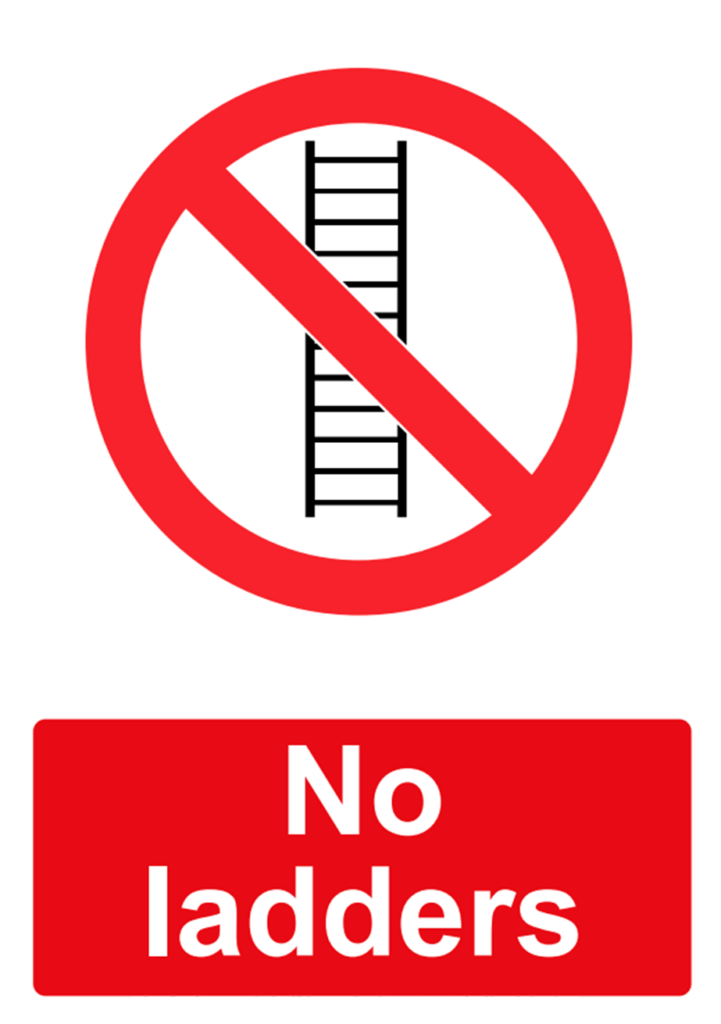
Yellow (Amber): Warning
Highlights specific hazards or risks.
Examples: Caution: slippery surface, Danger: high voltage
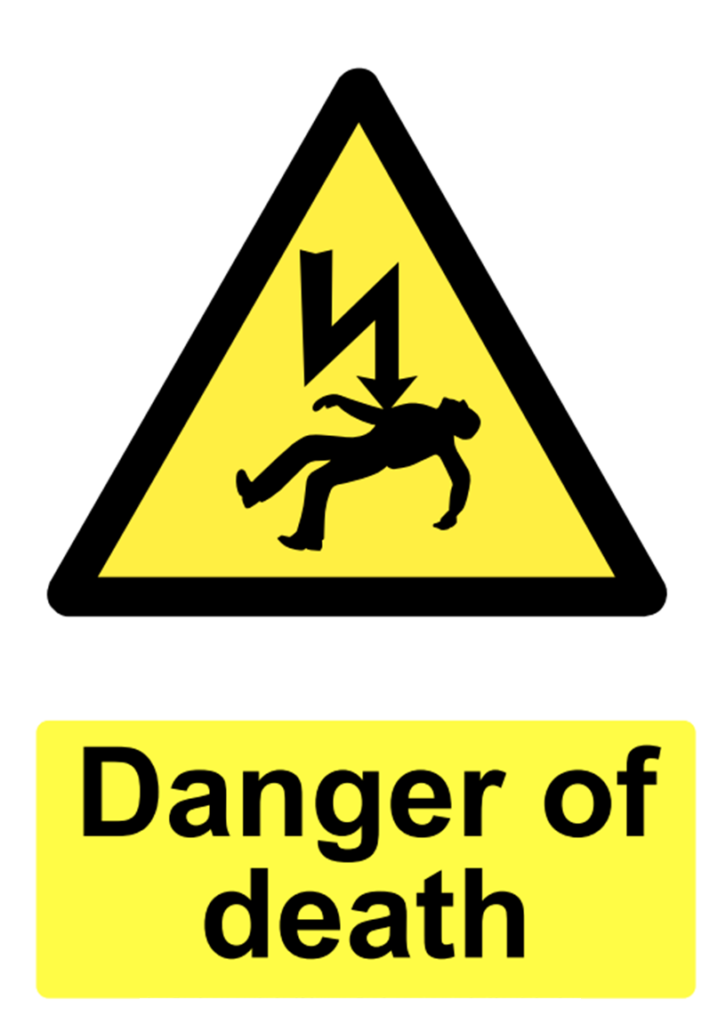
Blue: Mandatory Action
Specifies required instructions.
Examples: Wear safety footwear, Use protective gloves
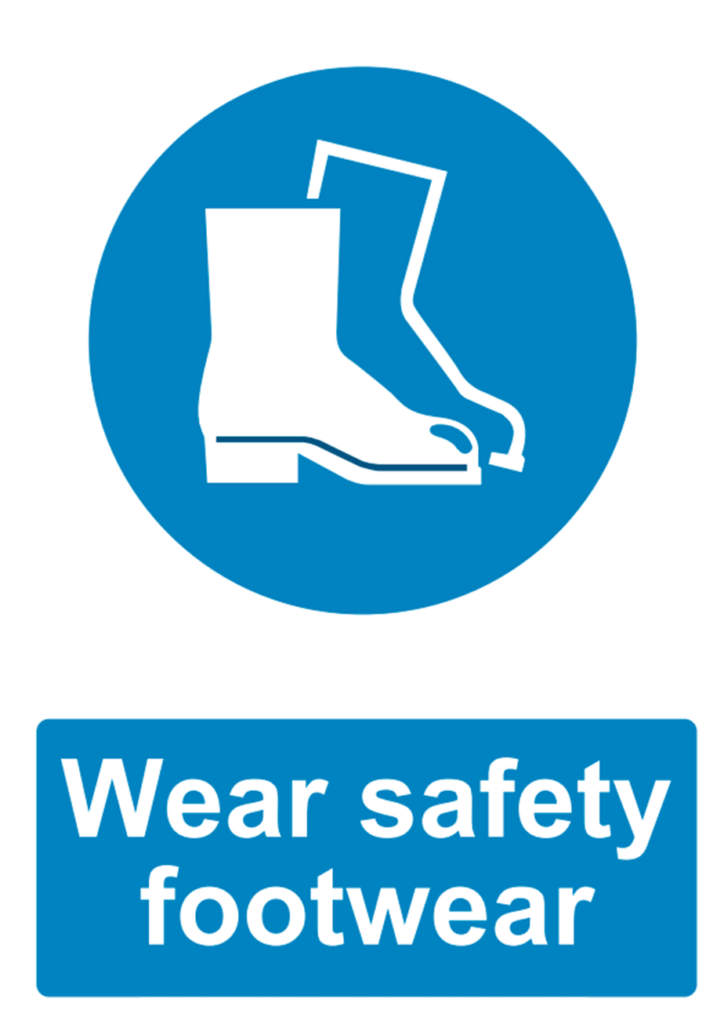
Green: Safe Condition or Emergency Information
Marks safe routes or safety equipment locations.
Examples: Assembly point, Defibrillator (AED)
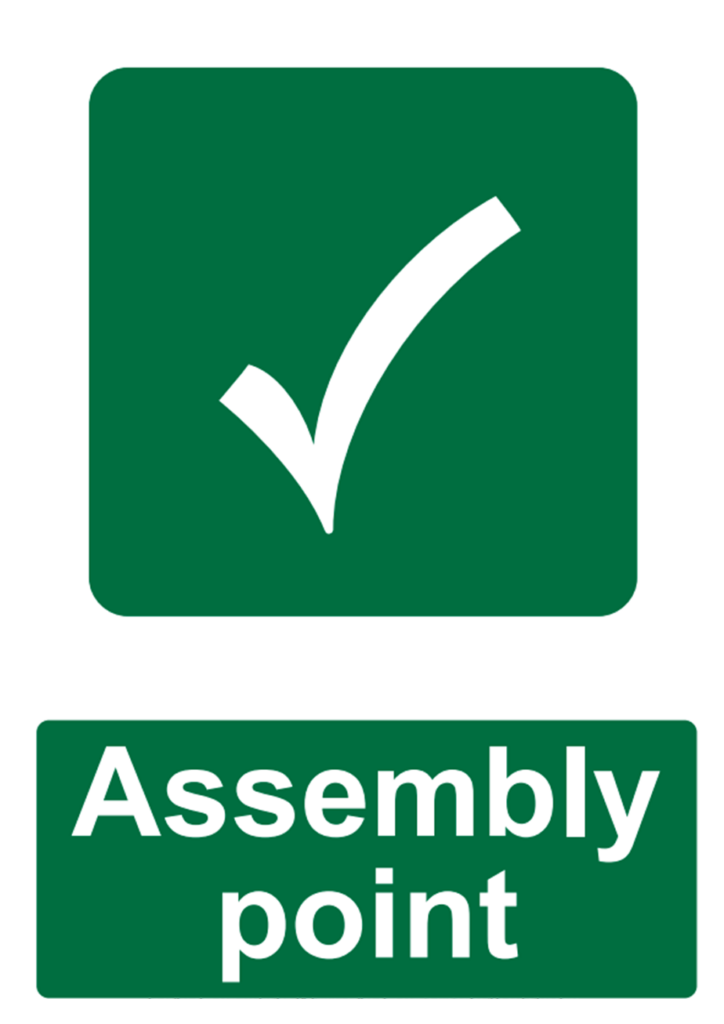
Beyond colour, each sign also uses specific shapes and pictograms to reinforce meaning. This standardisation makes signs effective even for those unfamiliar with the specific site or language. Using clear, colour-coded signage throughout a site reinforces safe behaviour, especially during high-pressure or emergency situations.
Maintaining Effective Signage
On construction sites, conditions change rapidly, and signage must keep pace. Faded, broken or obscured signs become as ineffective as no signs at all, creating unnecessary risks and undermining compliance. To remain effective, all signage should be:
- Clean and legible – free from dirt, dust or graffiti
- Physically intact – not cracked, bent or peeling
- Securely fixed – properly mounted with no risk of falling
- Clearly visible – unobstructed by materials, scaffolding or site changes
Include regular signage condition checks during site inspections, particularly after adverse weather or significant layout changes. For temporary hazards like open trenches or restricted access zones, update or remove signage as conditions evolve. Well-maintained signs demonstrate a proactive safety culture that regulators, clients and contractors increasingly expect.
Construction Site Notice Boards
A construction site notice board serves as a central communication point. It should provide essential information that keeps workers informed about site rules and prepared for emergencies. While content varies by project, a well-organised notice board typically includes:
- Site safety rules and procedures
- Emergency contact numbers – site manager, first aider and emergency services
- Evacuation routes and assembly points
- Health and safety policies – including PPE requirements
- Site induction details – outlining essential knowledge for new personnel
- Accident-reporting procedures
- Insurance and permits (where applicable)
- Daily updates or project notices – such as access changes, deliveries or key hazards
Place the board in high-traffic areas like main entrances or staff facilities and keep information current. Present content using legible fonts and, where possible, include visual elements like diagrams or signage symbols. In high-turnover environments or multi-contractor sites, clear notice boards help establish consistency and promote accountability across teams.
British Standards Compliance (BS EN ISO 7010)
All UK construction site signage must comply with BS EN ISO 7010 – the British Standard for safety signs. This standard governs signage design to ensure immediate recognition regardless of language or literacy levels. Key BS EN ISO 7010 compliance aspects include:
- Standardised pictograms – simple, unambiguous symbols with universal recognition
- Consistent shapes and colours – such as red circles for prohibition or yellow triangles for warnings
- Durable design – signs must remain legible and resilient in challenging site conditions
- Appropriate sizing – symbols and text must be large enough to read from a safe distance
Compliant signs prevent confusion and reduce accident risks caused by misinterpretation – a significant concern on busy, multilingual or high-risk sites. They also help organisations demonstrate due diligence during inspections or audits. When selecting signage, confirm suppliers' compliance with BS EN ISO 7010, particularly for custom signs or online purchases.
Supporting Multilingual Workforces
Construction sites often bring together teams from diverse linguistic backgrounds. In areas where not all workers speak English fluently, bilingual signage enhances communication and maintains safety standards.
While not explicitly required by law, the Health and Safety Executive (HSE) encourages employers to ensure all workers understand on site information, including safety signage. In practice, this might involve:
- Providing signs in both English and commonly spoken languages (e.g., Polish, Romanian or Punjabi)
- Using visual symbols and pictograms to reduce text reliance
- Supplementing signs with multilingual safety briefings or site inductions
Bilingual signage proves particularly important in high-risk areas, around hazardous materials or where precise instructions require immediate comprehension. This approach creates a more inclusive working environment while reducing the chance of misunderstanding risks.
Site-Specific Risk Assessment
No two construction sites match exactly, which is why signage requirements must always stem from site-specific risk assessments. This process identifies present hazards, potentially affected individuals and necessary control measures – including safety signs. During assessment, site managers or health and safety professionals should consider:
- Which hazards remain after implementing other controls (like physical barriers or PPE)
- Who needs to see the signage – workers, subcontractors, delivery personnel or visitors
- Where to place signage for maximum visibility and relevance
- Whether changing conditions require additional signs, such as new work phases or weather impacts
Review risk assessments regularly and update them whenever site layout, workforce or work activities change. By connecting signage decisions directly to documented risk assessments, construction teams demonstrate regulatory compliance while maintaining proactive on site safety approaches.
Final Considerations
Beyond meeting regulatory requirements, construction site signage forms a fundamental part of creating safe, well-managed working environments. Effective signage provides everyone on site with the essential information they need to work safely and responsibly. By following UK regulations, aligning with British Standards and conducting thorough risk assessments, construction professionals can implement signage strategies that are both compliant and fit for purpose, supporting safety and productivity throughout every project phase.
Categories:
Written by
Nicholas Dunbar
Content Manager | Procore
62 articles
Nick Dunbar oversees the creation and management of UK and Ireland educational content at Procore. Previously, he worked as a sustainability writer at the Building Research Establishment and served as a sustainability consultant within the built environment sector. Nick holds degrees in industrial sustainability and environmental sciences and lives in Camden, London.
View profileZoe Mullan
27 articles
Zoe Mullan is an experienced content writer and editor with a background in marketing and communications in the e-learning sector. Zoe holds an MA in English Literature and History from the University of Glasgow and a PGDip in Journalism from the University of Strathclyde and lives in Northern Ireland.
View profileExplore more helpful resources

Control the Chaos: Standardising Document Workflows in Construction Projects
Document control and implementation play a central role in managing risk, meeting deadlines, and delivering projects to spec. As builds become more complex and teams increasingly disperse, the volume and...

Cost-Plus Construction Contracts in the UK
A construction cost-plus contract – sometimes called a cost-reimbursable or prime cost contract – reimburses all project costs and adds a fee to cover the contractor’s overhead and profit. UK...

Digital Construction Technology for Whole-Life Value
For decades, the construction industry has kept a narrow focus on capital cost — the one-time, upfront costs of a construction project. While in the short term this seems like...

UK Construction Progress Reports: Tools for Smarter Site Management
Construction progress reports track completed work, on site issues, costs, and safety so UK project teams can demonstrate progress, secure payments, and stay on programme. Accurate progress data is essential...
